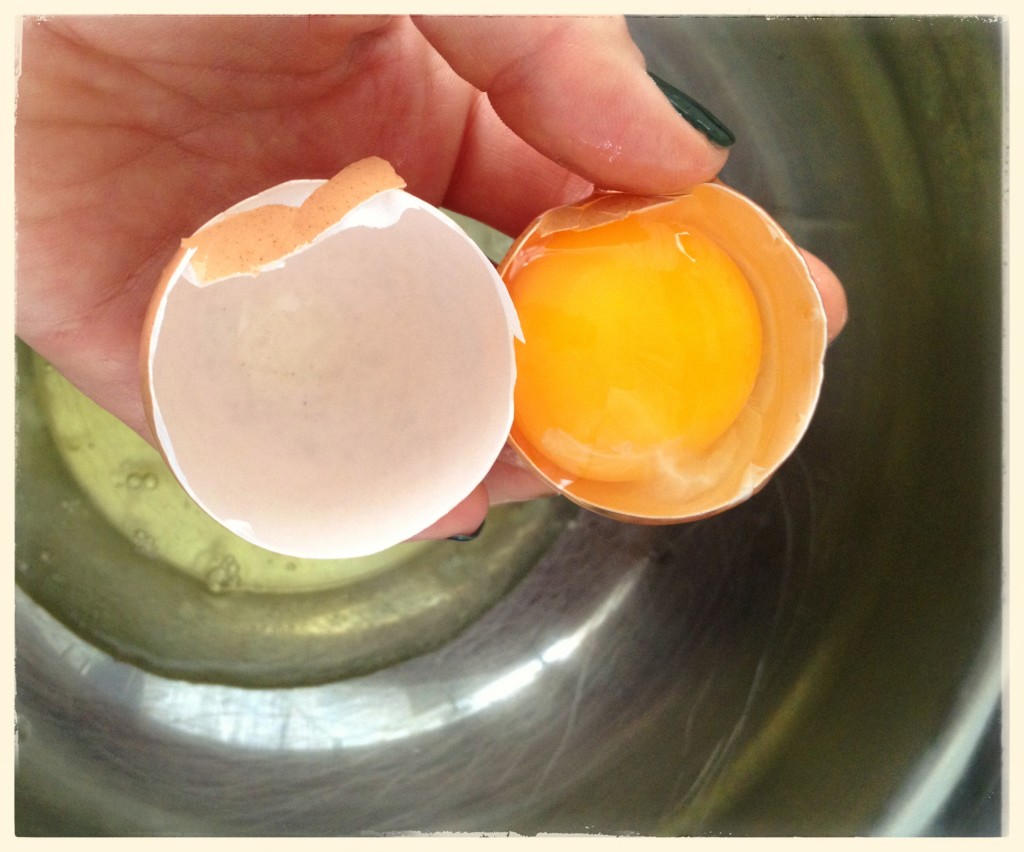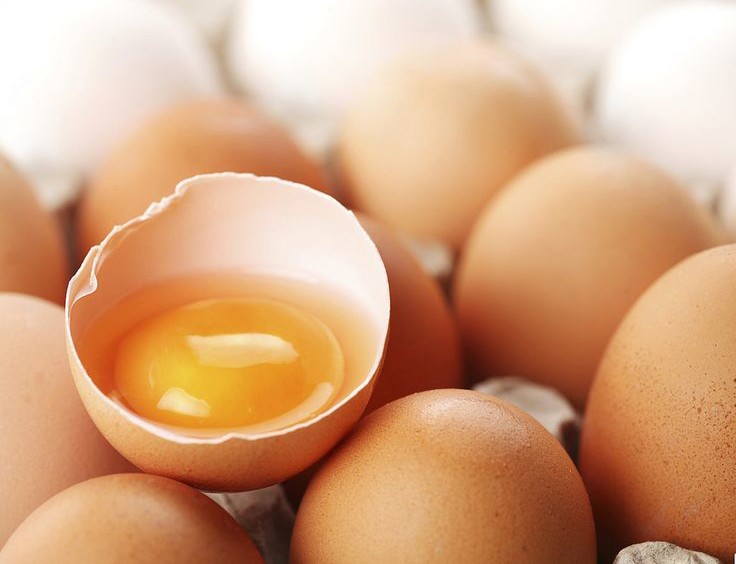How a person learned to separate eggs usually says a lot about how they learned to cook- possibly someone took great care in showing them around the kitchen, offering valuable basic along the way, they might be self taught and were forced into a maddening period of trial and error, perhaps they watched patiently while a certain family member did all the cooking in their formative years. Whatever the way, learning to separate eggs is a little cooking rite of passage, marking a key moment when a person moves from occasional tourist to frequent kitchen flyer; if a person separates eggs with ease they either cook or bake quite often or enjoy it enough to learn some good, basic technique. If you find yourself mucking it up more often than you’d like, here are some tips you can try:
*Eggs separate much easier at room temperature. You can save yourself a lot of fussing by simply taking them out of the fridge about 15-20 minutes before you begin.
*Crack your egg gently on a flat surface like a plate or hard counter, NOT on the edge of something. You will get a cleaner shell crack this way and then can simply pry the shell apart into two even shell halves. You are also less likely to break the yolk during cracking.
*Always separate each egg white into its own small bowl, then transfer into larger bowl containing the other egg whites. This way, if you break one yolk, you haven’t ruined a whole batch of whites. Place yolks in a separate bowl and if not using immediately, save for another use (or visa versa if using yolks but not whites).
*If you accidentally end up with a bit of shell in the bowl it is easily scooped out using another, larger piece of shell. Make sure you use a piece of eggshell that has a clean edge so you don’t end up adding bits of shell instead!
There are two techniques I find easiest.
Option one: Shell-to-Shell.
 Crack the eggshell and then, over a bowl, open into two halves. When pulling shell apart, angle the shell so the entire egg is in one half. The egg whites will overflow into the bowl while the yolk remains in the shell. To separate the remaining whites, gently move the yolk back and forth from one shell half to the other, allowing the whites to fall into the bowl while the heavier yolk remains intact in the shell. Be careful not to break the yolk on the shell edge while transferring back and forth.
Crack the eggshell and then, over a bowl, open into two halves. When pulling shell apart, angle the shell so the entire egg is in one half. The egg whites will overflow into the bowl while the yolk remains in the shell. To separate the remaining whites, gently move the yolk back and forth from one shell half to the other, allowing the whites to fall into the bowl while the heavier yolk remains intact in the shell. Be careful not to break the yolk on the shell edge while transferring back and forth.
Option two: Hand-held.
 Over a bowl, crack the shell and break open so that the egg falls gently into your hand. Your hand should be cupped slightly to hold the egg, with your fingers open just enough to let the whites slip through without losing hold of the yolk. With your free hand, reach under your fingers and delicately pull any dangling whites into the bowl. Place the yolk in a separate container.
Over a bowl, crack the shell and break open so that the egg falls gently into your hand. Your hand should be cupped slightly to hold the egg, with your fingers open just enough to let the whites slip through without losing hold of the yolk. With your free hand, reach under your fingers and delicately pull any dangling whites into the bowl. Place the yolk in a separate container.
If you are using only one part of the egg here are some ideas for the leftover yolks/whites beyond frying up breakfast (although that’s a great, healthy option for the egg whites). Both yolks and whites will keep for up to two days refrigerated in a sealed container.
Yolks
- Custard/Pudding
- Ice Cream
- Lemon Curd
- Pasta Sauce
- Creme Brûlée
- Mayonnaise
Whites
- As a glaze for breads, pies, tart edges, etc.
- Meringue
- Mousse
- Frosting
- Coconut Macaroons
- French Macarons
- Frittatas
- Fizz cocktails
Now get cracking! Yup, I couldn’t help it.♥





Wow. This post has changed my life! Have to try it now 😀
So now I know I’m not crazy. I always do the hand-held to be sure to seperate all the whites from the yolk and everyone tells me that it is disgusting and that no-one does that (except for the kids who love to use their hands in the kitchen).
Hope you had a great time in Paris, with awesome food experiences to give you inspiration…